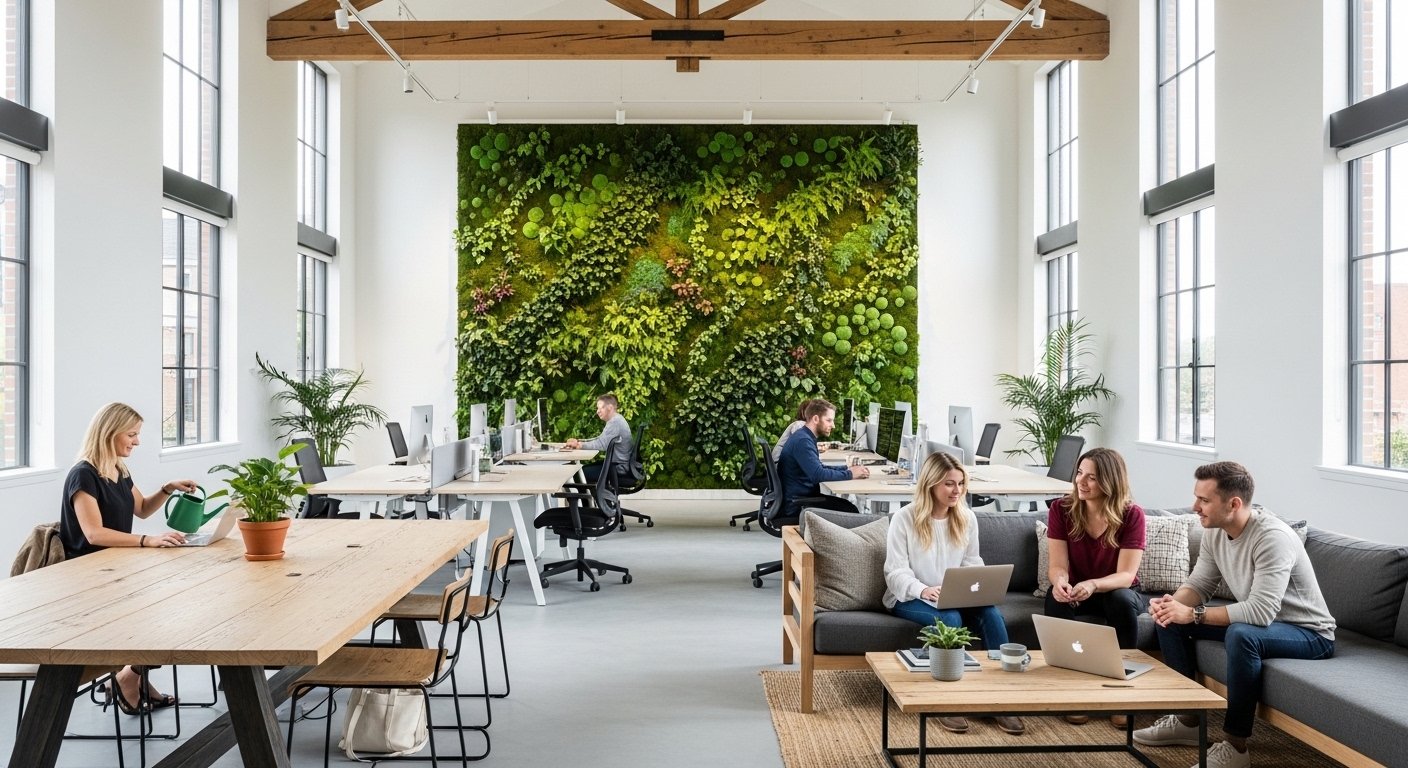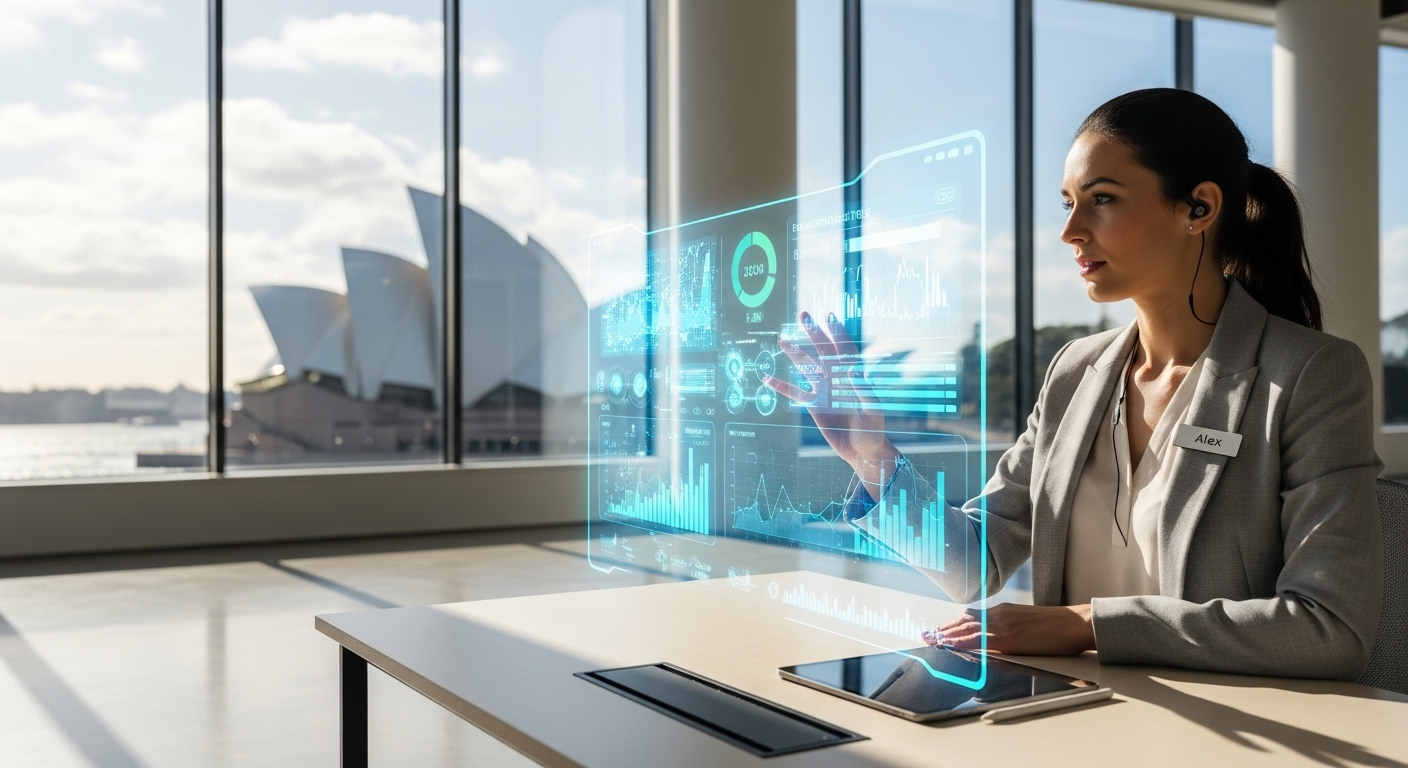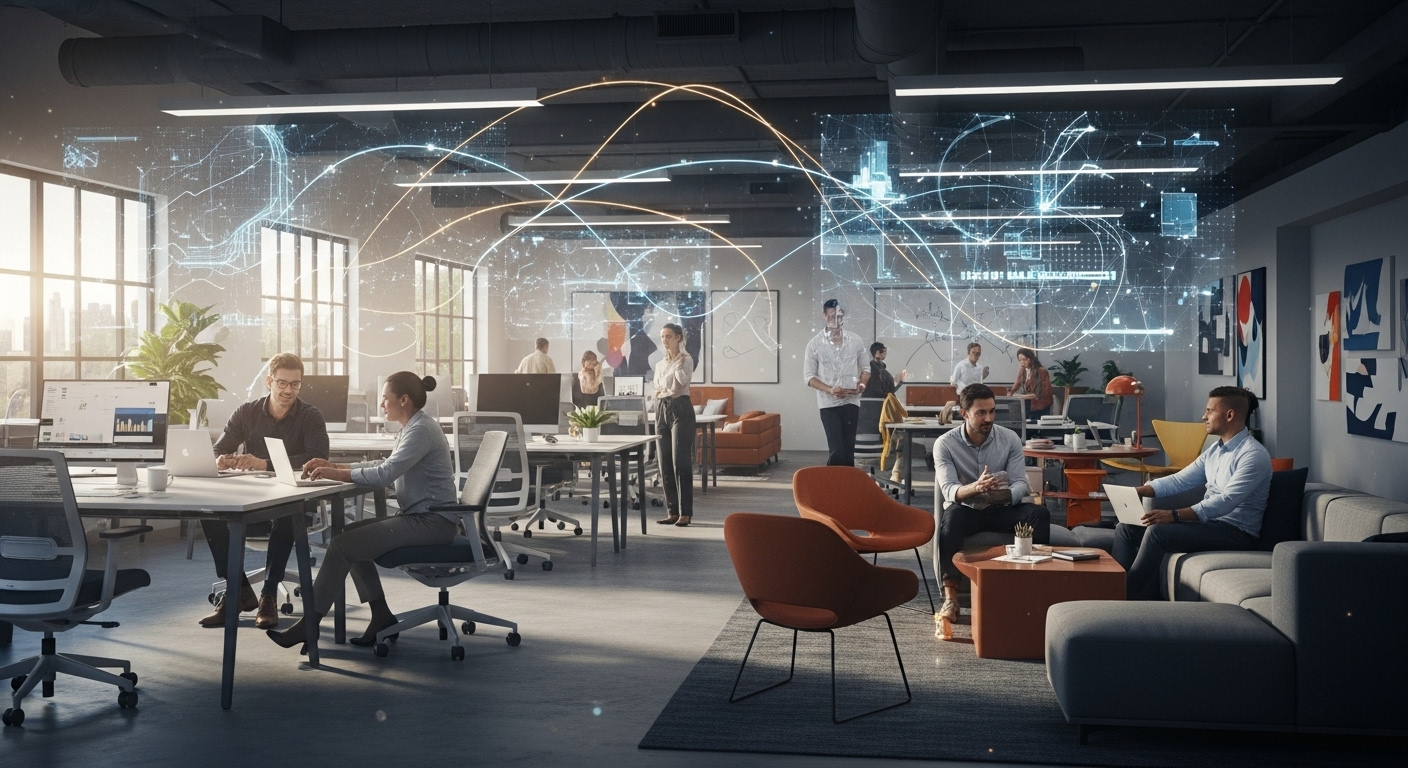In the modern economy, the office is no longer just a place to work; it’s an ecosystem that directly influences productivity, well-being, and corporate identity. As businesses worldwide grapple with the dual challenges of attracting top talent and meeting climate goals, sustainable workspaces have evolved from a niche trend into a strategic imperative. This isn’t merely about installing solar panels or recycling bins. It’s a holistic philosophy that integrates the health of the planet with the well-being of its people, creating environments that are not only eco-friendly but also restorative and high-performing. This guide explores the biophilic blueprint—a framework for designing workspaces that draw on our innate connection to nature to boost focus, creativity, and resilience, proving that what’s good for the planet is ultimately good for performance.
Defining the Biophilic Workspace: Beyond Potted Plants
Biophilic design is a concept that seeks to connect building occupants more closely to nature. While it often includes the presence of plants, its principles run much deeper. At its core, biophilic design incorporates natural light, natural materials, and patterns that mimic the natural world to create a calming and invigorating environment. This can manifest in several ways: direct connections, such as indoor gardens, living walls, and water features; indirect connections, like using natural materials such as wood and stone, or images of nature; and experiences of space and place, which involve creating layouts that offer both open vistas and protected refuges, mirroring natural landscapes. Research consistently shows the powerful impact of this approach. A study cited by Terrapin Bright Green found that offices with optimized natural light saw a 15% reduction in absenteeism. Another study revealed that including natural elements could boost creativity by 6% and productivity by 8%. By moving beyond the token ficus in the corner and embracing a comprehensive biophilic strategy, companies can craft spaces that reduce stress, improve cognitive function, and foster a tangible connection to the natural world, making the office a place people genuinely want to be.
The Energy Equation: Powering Productivity with Efficiency
A truly sustainable workspace operates on a lean energy diet, minimizing its carbon footprint while maximizing operational efficiency. The journey begins with intelligent lighting. Swapping traditional bulbs for energy-efficient LEDs is a foundational step, but modern systems go further. Daylight harvesting sensors automatically dim artificial lights when natural light is sufficient, and occupancy sensors ensure that energy isn’t wasted illuminating empty rooms. Beyond lighting, the building’s heating, ventilation, and air conditioning (HVAC) system is a major energy consumer. Upgrading to high-efficiency systems, implementing smart thermostats that learn occupancy patterns, and ensuring the building envelope is properly insulated can lead to dramatic reductions in energy consumption. For businesses looking to take a bigger leap, on-site renewable energy generation, such as rooftop solar panels, offers a path toward energy independence and long-term cost savings. These initiatives deliver a powerful return on investment. According to the U.S. Green Building Council, LEED-certified buildings have been shown to command higher rental premiums and have lower vacancy rates. By strategically investing in energy efficiency, companies not only reduce their environmental impact but also create more comfortable, cost-effective environments that directly contribute to the bottom line.
The Circular Office: From Waste Reduction to Resource Renewal
The traditional linear economic model of ‘take, make, dispose’ is no longer viable. A sustainable workspace embraces the principles of a circular economy, where resources are kept in use for as long as possible. This starts with conscious procurement. Choosing furniture made from recycled or reclaimed materials, opting for suppliers with sustainable practices, and selecting products with minimal, recyclable packaging are key. For instance, companies can partner with vendors who offer modular furniture that can be easily repaired or reconfigured rather than replaced. Waste management is the other side of the coin. A robust program goes far beyond a simple recycling bin. It includes designated streams for compost, electronics, and other materials. The goal is to divert as much waste from landfills as possible. This also involves tackling the pervasive issue of single-use plastics by providing reusable dishware in kitchens, installing water filtration systems to discourage bottled water, and working with catering services that use compostable containers. By designing out waste from the beginning and creating systems for resource recovery, the circular office minimizes its environmental impact, often uncovers cost savings, and sends a clear message to employees and stakeholders about its commitment to responsible stewardship.
Healthy Materials, Healthy Teams: The Indoor Environment Quality Imperative
What we breathe and what surrounds us indoors has a direct impact on our health and cognitive function. Indoor Environmental Quality (IEQ) is a critical pillar of sustainable workspace design that focuses on the health and comfort of occupants. A primary concern is air quality. Many conventional building materials, paints, and furnishings off-gas volatile organic compounds (VOCs), which can cause headaches, dizziness, and long-term health issues. Specifying low-VOC or zero-VOC paints, flooring, and furniture is essential for creating a healthy indoor atmosphere. This is complemented by advanced air filtration systems (such as MERV 13 or higher) and ventilation strategies that ensure a consistent flow of fresh, clean air. Biophilic elements like plants can also act as natural air purifiers. Furthermore, IEQ encompasses thermal comfort, acoustic performance, and access to natural light and views. Poor acoustics can be a major source of distraction and stress in open-plan offices, making sound-absorbing materials and designated quiet zones crucial. Research from the Harvard T.H. Chan School of Public Health has shown that working in well-ventilated, low-VOC environments can double cognitive function scores. Investing in IEQ is a direct investment in your team’s health, focus, and overall performance.
Water Wisdom: Strategic Conservation in the Workplace
While often overshadowed by energy and waste, water conservation is a vital component of a comprehensive sustainability strategy. Commercial buildings are significant consumers of water, and implementing conservation measures can yield substantial environmental and financial benefits. The most immediate impact comes from upgrading restroom fixtures. Installing low-flow toilets, urinals, and faucets can reduce water consumption by 30% or more without compromising performance. Beyond the restrooms, a building’s landscaping can be a major drain on water resources. Sustainable landscaping, or xeriscaping, involves using native, drought-tolerant plants that require minimal irrigation. For buildings that do require irrigation, smart systems that use moisture sensors and weather data can prevent unnecessary watering. For more ambitious projects, rainwater harvesting systems can capture precipitation from rooftops, storing it in cisterns for non-potable uses like irrigation or flushing toilets. These strategies not only conserve a precious resource but also reduce utility bills and decrease the strain on municipal water treatment facilities. Adopting a mindset of water wisdom reinforces a company’s commitment to sustainability across all facets of its operations and contributes to the resilience of the local community.
Cultivating a Culture of Sustainability: Engaging Your Team
A beautifully designed sustainable office can only achieve its full potential if the people within it are engaged and committed to its principles. Technology and design are enablers, but culture drives long-term success. Creating a culture of sustainability requires clear communication and active employee involvement. This can start with simple education, using signage to explain the building’s green features and dashboards to display real-time energy and water consumption, which gamifies conservation efforts. Forming a ‘green team’ or sustainability committee empowers passionate employees to lead initiatives, organize events like Earth Day challenges, and gather feedback from colleagues. Companies can further embed sustainability into their culture by offering incentives for green commuting, such as subsidies for public transport or secure bike storage and shower facilities. Partnering with local, sustainable vendors for office supplies and catering also reinforces these values daily. When employees understand the ‘why’ behind the initiatives and feel empowered to contribute, they become active participants rather than passive occupants. This collective ownership transforms the sustainable workspace from a set of features into a living, breathing expression of the company’s values, enhancing employee pride and engagement.
Measuring the Triple Bottom Line: ROI and Certification
For any corporate initiative to be sustainable, it must be financially viable. The good news is that investing in sustainable workspaces delivers a compelling return across the triple bottom line: people, planet, and profit. The financial ROI is often the easiest to quantify, seen in reduced utility bills from energy and water efficiency and lower operational costs from waste reduction. However, the indirect returns are arguably more valuable. A healthier, more engaging workspace directly impacts the ‘people’ bottom line by improving employee satisfaction, reducing absenteeism, and serving as a powerful tool for attracting and retaining top talent in a competitive market. This directly translates to increased productivity and innovation. For the ‘planet’, the benefits are clear—a reduced carbon footprint and conservation of resources. To validate these efforts and provide a clear framework, many companies pursue third-party certifications like LEED (Leadership in Energy and Environmental Design), WELL Building Standard, or BREEAM.
As the World Green Building Council states, “Green buildings have been shown to save money through reduced energy and water use, and lower long-term operations and maintenance costs.”
These certifications provide a credible, marketable benchmark of a company’s commitment, enhancing brand reputation and demonstrating leadership. By measuring success through this holistic lens, businesses can clearly see that a biophilic blueprint is not an expense, but a strategic investment in a more resilient and profitable future.
Ultimately, the transition to sustainable workspaces is a fundamental evolution in our understanding of the built environment’s role in business success. The biophilic blueprint offers a powerful model for creating spaces that are regenerative by design—restoring employees’ well-being, renewing natural resources, and revitalizing the company’s bottom line. It moves beyond a checklist of green features to a deeply integrated strategy that places human and planetary health at the center of design. By embracing natural light, clean air, efficient systems, and a circular mindset, companies are not just building better offices; they are building more resilient organizations, fostering more engaged cultures, and making a tangible investment in a healthier, more productive, and more sustainable future for all.





